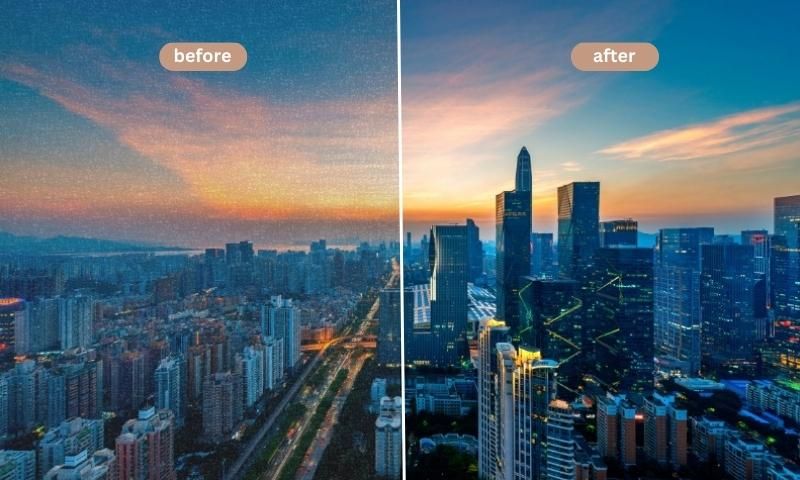
In the ever-evolving world of audio production, clarity and precision are everything. Whether you’re a sound engineer, podcast editor, or music producer, background noise is one of the most frustrating obstacles to achieving high-quality audio. Traditional noise reduction tools have served the industry for years, but with the emergence of artificial intelligence, a new generation of tools is transforming the way professionals handle noisy recordings. This guide dives deep into modern AI noise reduction techniques and offers insight into how audio professionals can make the most of this powerful technology.
Understanding the Problem of Noise in Audio Production
Before exploring the solutions, it’s essential to understand what noise actually means in an audio context. Noise refers to any unwanted sound that interferes with the desired signal. This could include background chatter, air conditioning hums, street noise, or even internal mic static. In recording environments outside of professional studios—such as home setups or mobile recordings—these noises are even more prevalent.
Traditional noise reduction relied on static algorithms that filtered out specific frequencies or required a “noise print” to identify unwanted sounds. While effective to an extent, these methods often resulted in a noticeable loss of audio quality, especially when working with complex or dynamic noise profiles.
How AI Noise Reduction Differs from Traditional Techniques
The key difference lies in the intelligence and adaptability of the software. AI noise reduction tools don’t just remove noise—they learn what noise sounds like in various contexts and intelligently distinguish it from useful audio signals. These systems are trained on massive datasets containing noisy and clean audio pairs. Through deep learning, they develop models that can generalize and make accurate predictions even with completely new audio inputs.
Rather than applying a blunt-frequency cutoff or masking technique, AI-based tools evaluate thousands of micro-patterns within the audio waveform. The result is a cleaner sound that retains its natural characteristics without the robotic artifacts or excessive softening that often accompany traditional methods.
Core Techniques Behind AI Noise Reduction
Several core techniques power AI noise reduction solutions. Understanding these can help professionals choose the right tool for their specific needs.
Deep Neural Networks (DNNs)
At the heart of most AI noise reduction systems are deep neural networks. These networks are capable of learning nonlinear relationships between noisy input and clean output. By processing vast datasets, DNNs create complex mappings that help distinguish speech, instruments, or other desirable sounds from background noise. This model is then used to clean real-time or recorded audio with remarkable accuracy.
Convolutional Neural Networks (CNNs)
CNNs, often used in image processing, are now being adapted for spectrogram-based audio analysis. They analyze the time-frequency representation of audio signals and help isolate unwanted components. CNNs are especially useful for handling stationary noises such as electric hums and HVAC sounds.
Recurrent Neural Networks (RNNs)
RNNs consider temporal relationships, making them particularly effective in processing speech and music where audio patterns unfold over time. Long Short-Term Memory (LSTM) models, a type of RNN, can remember and process long audio sequences to preserve context while removing noise. This leads to more coherent and natural-sounding results.
Generative Adversarial Networks (GANs)
GANs have found their way into AI noise reduction by generating realistic clean audio from noisy input. They operate using two models—the generator and the discriminator—working in opposition. This method refines the system’s ability to distinguish noise from signal over time, leading to highly accurate denoising results.
Popular AI Noise Reduction Tools for Professionals
The rise of AI-powered tools has created a wave of innovative software designed specifically for audio professionals. Here are some of the most widely used:
iZotope RX
One of the most respected names in the industry, iZotope RX offers advanced AI noise reduction modules like Voice De-noise and Spectral De-noise. These tools provide surgical control over noise without degrading audio fidelity. RX also features machine learning-based modules that auto-detect and repair problematic audio.
Krisp
Originally developed for real-time noise cancellation during calls, Krisp has gained popularity among podcasters and streamers. It uses advanced AI to separate human voices from ambient sounds and provides a plug-and-play experience for immediate noise suppression.
Adobe Podcast (Enhance Speech)
Adobe’s AI-based Enhance Speech tool is designed to make spoken audio recorded in poor environments sound like it was captured in a professional studio. It applies intelligent speech isolation and echo removal techniques to produce studio-quality audio.
NVIDIA RTX Voice
For those using NVIDIA GPUs, RTX Voice offers real-time AI noise reduction that leverages the power of GPU-based deep learning. It’s ideal for streaming, conferencing, or any live application where on-the-fly processing is needed.
Descript Studio Sound
Part of Descript’s podcast editing suite, Studio Sound applies AI to enhance voice recordings, reduce background noise, and level audio—all automatically. It’s especially popular among independent creators due to its ease of use and effectiveness.
Applications of AI Noise Reduction in Audio Workflows
Podcasting and Voiceovers
AI noise reduction helps podcasters deliver clean, distraction-free voice content, even when recorded in noisy environments. It reduces post-production time and eliminates the need for expensive recording booths.
Film and Television Post-Production
In film editing, clean dialogue is crucial. AI tools enable editors to salvage noisy on-location audio, saving time and reducing the need for costly ADR (Automated Dialogue Replacement).
Live Broadcasting
Real-time AI noise reduction is a game-changer for live broadcasts, ensuring that ambient noise doesn’t overwhelm the speaker’s voice. This is particularly useful in outdoor reporting, sports commentary, and live interviews.
Music Production
While traditionally seen as risky for music, AI noise reduction is increasingly being used to clean up vocal takes, instrument recordings, and demo tracks. Tools that allow frequency-specific or instrument-specific processing provide unprecedented control for producers.
Forensics and Archival Restoration
In law enforcement or historical audio restoration, preserving intelligibility without introducing artifacts is essential. AI noise reduction is capable of bringing clarity to old, degraded, or low-quality recordings, making it valuable in forensic and archival work.
Limitations and Considerations
Despite its many strengths, AI noise reduction isn’t a magic bullet. Poorly trained models or overly aggressive settings can still introduce artifacts or create an unnatural sound. Some tools may also struggle with certain types of noise—particularly dynamic or unpredictable sounds like clapping or shouting.
Moreover, AI models can be computationally intensive, requiring powerful hardware or cloud-based processing. Professionals working in high-throughput environments need to balance quality with speed and resource usage.
Best Practices for Using AI Noise Reduction
To maximize the benefits of AI noise reduction, audio professionals should follow these tips:
- Always work on a duplicate of your original audio.
AI tools can sometimes produce irreversible changes; working non-destructively ensures flexibility. - Apply noise reduction early in the workflow.
Cleaning audio at the beginning helps maintain clarity through later processing stages like EQ, compression, and mixing. - Adjust thresholds manually when possible.
Auto-settings are helpful, but fine-tuning often yields better results. Most tools allow for custom intensity or sensitivity settings. - Combine with traditional techniques.
Layering AI noise reduction with gating, manual editing, and equalization can enhance results. - Test and validate across multiple listening environments.
Make sure the final audio sounds good on various playback systems, from studio monitors to mobile phones.
The Future of AI Noise Reduction
The landscape of audio engineering is being reshaped by AI. As machine learning models continue to evolve, future AI noise reduction tools will become more efficient, customizable, and integrated with other aspects of the production chain. Features like automatic scene recognition, context-aware denoising, and emotional tone preservation are on the horizon.
For audio professionals, staying updated with the latest developments in AI noise reduction is no longer optional—it’s essential. Adopting and mastering these tools not only saves time but elevates the overall quality of your productions in an increasingly competitive industry.




More Stories
Top 10 Strongest Metals for High-Stress Applications
Choosing the Best Miami VPS Server for Gaming and Streaming
Understanding the Used Car Buying Process in Perth: A Step-by-Step Approach